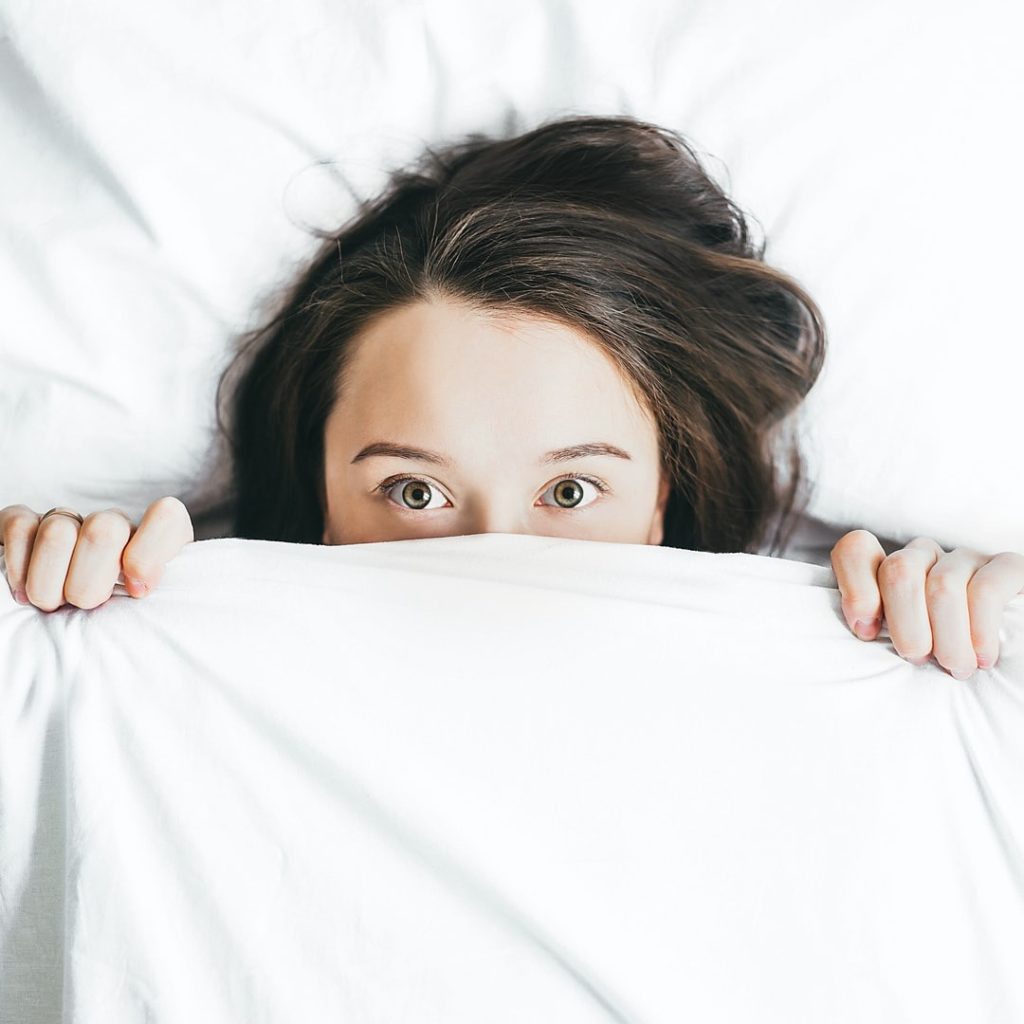Rapid eye movement (REM) sleep behavior disorder (RBD) is a disorder in which sleep is interrupted by vivid nightmares or dreams that cause the individual to physically act out their visional experience.
If you have this disorder, during the REM cycle of sleep, your body loses its ability to control the musculoskeletal system. This loss of motor function causes the activity in your dreams to be acted upon without you realizing it.
Basics of Rapid Eye Movement
REM is a state of sleep during which your brain activity is the highest. This cycle occurs approximately every 90 minutes after you fall asleep. The name “rapid eye movement” describes the action of your eyes moving side to side behind your closed eyelids during this period. Though you are still in the state of sleep during this cycle, the body shows many signs as if it were almost awake. This is the state during which dreams often arise and you feel as if you are experiencing life as you would awake.
In a normal REM cycle, your limbs become temporarily paralyzed. Your body often refrains from movement during the REM phase. Most individuals have very minimal movement during this time. If you struggle with RBD, however, you tend to have greater physical movement during this cycle. Minor movement during this stage may not be a concern, but large amounts of movement could mean you have RBD.
Risks of REM Sleep Behavior Disorder
There are a variety of effects that this disorder can have on your everyday life. Some of these can be dangerous.
Because of the excess movement during sleep, there is often a lack of quality sleep during the night and a higher potential for injury to occur. Getting up out of bed can lead you to possible falls. Even remaining in bed, excessive movement can cause you to injure yourself or your partner if you commonly sleep next to another individual.
This disorder is often diagnosed in individuals who later develop Parkinson’s disease or dementia. This is a potential long-term concern to be aware of. It is not a guarantee that this sleep disorder will develop into one of these disorders, but the possibility is greatly increased.
With RBD, there are often a variety of negative emotions and nightmares that arise while an individual is asleep. Along with restlessness, this can cause individuals to feel frightened or adopt a negative feeling toward sleep itself. This can encourage the individual to avoid sleep when possible, which only increases the negative effects of the disorder.
How Addiction Affects RBD
Smoking cigarettes regularly can increase your chances of developing RBD. Cigarettes or any other form of nicotine can be addictive, and it is highly recommended to stay away from them to encourage better sleeping habits and lower the chances of developing this sleep disorder.
Some substances can help to lower the effects of RBD. This seems to be a good thing, but it can be a danger to rely on using a substance for sleep improvement. By using these substances to induce greater levels of sleep, your body can become dependent upon them to get quality sleep every night.
A common symptom of addiction is insomnia. Using a substance to induce sleep may work initially, but after a short time, it will cause your body to adjust and revert to sleep as it was before without the substance. This will result in a higher amount of use needed to improve sleep. This process begins the cycle of addiction. It is important to stay away from the use of substances as sleep aids to avoid becoming reliant on the substance for good sleep.
Working With REM Sleep Disorder
Overcoming RBD along with addiction can be extremely frustrating. This sleep disorder can be managed with medications, but while in recovery, you need to ensure you are using the medications correctly. Making some adjustments to your daily routine and overall diet may be enough to counteract the effects of RBD. Melatonin may also be used to help alleviate this disorder, but it only should be used as a short-term solution.
Setting up a nightly routine with relaxing activities can help you train your mind to fall asleep at the time you desire and maintain your self-care. Keeping a consistent sleep schedule is essential during this process. Implementing practices such as stretching, reading, meditating, listening to calm music, or engaging in any healthy activity that you feel will help induce sleep can be used in this nightly routine. Setting a minimum of 30 minutes aside before you wish to fall asleep each night to engage in these relaxing activities can help your body recognize the state of relaxation and associate it with sleep.
REM sleep behavior disorder (RBD) is a concern, especially when combined with substance use disorder. This sleep disorder causes excessive movement during sleep, which can lead to potential injury to yourself or others. The emotions and dreams that occur with RBD are often very negative and can cause individuals to adopt negative feelings toward sleep itself. When you are working through the process of recovery and overcoming addiction, sleep is a vital factor to focus on to ensure your body is functioning to its full potential. RBD can be challenging to manage but can be treated with medication and the implementation of healthy habits throughout your day. Ensuring you are only taking the recommended amount of medication to assist with this while in recovery is essential for your success. To learn more about REM sleep behavior disorder, reach out to Dream Recovery at (949) 732-1960.

